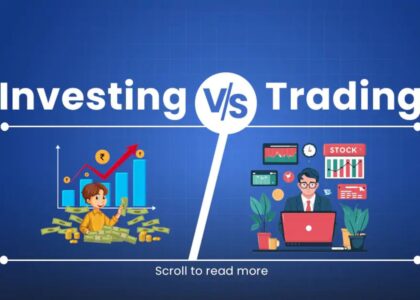In the world of entrepreneurship, ideas are the spark—but capital is the fuel. That’s where venture capitalism comes into play.
It’s one of the key forces behind some of the biggest tech giants today—from Flipkart to Swiggy, Zomato to Ola.
But what exactly is venture capitalism, how does it work, and why is it so important to the startup ecosystem?
This blog unpacks venture capitalism in detail—its process, players, structure, stages, risks, and future in the Indian and global economy and features views from veteran venture capitalist – Someshwar Srivastav.
What Is Venture Capitalism?
Venture capitalism is a form of private equity financing that provides funding to startups and early-stage companies with high growth potential.
These startups are typically too risky for traditional loans or public markets but are attractive enough for investors who seek high returns.
The capital provided is known as venture capital (VC), and it’s usually exchanged for equity, meaning ownership in the company.
Who Are Venture Capitalists?
Venture capitalists (VCs) are investors—either individuals (angel investors) or firms—who manage pooled funds to invest in startups. These investors are usually:
- Venture Capital Firms – Like Sequoia Capital, Accel, Tiger Global, Blume Ventures.
- Angel Investors – High-net-worth individuals who invest personal money.
- Corporate VC Arms – Companies like Google Ventures or Intel Capital.
- Institutional Investors – Pension funds or endowments that invest in VC funds.
VCs aim to fund startups early, help them grow, and then exit with a substantial return through IPOs or acquisitions.
How Venture Capital Works: The Process
Here’s a simplified breakdown of how venture capital flows into a startup:
- Sourcing Deals: VCs scout for promising startups through networking, pitch events, accelerators, or inbound applications.
- Due Diligence: They assess the startup’s business model, market opportunity, team, financials, and scalability.
- Term Sheet: If interested, the VC offers a term sheet—a non-binding agreement outlining investment terms.
- Funding: Upon agreement, funds are disbursed in exchange for equity. VCs now own a stake in the company.
- Mentoring & Scaling: Most VCs provide strategic guidance, board participation, and business connections to accelerate growth.
- Exit: After 5–10 years, VCs aim to exit via:
- IPO (Initial Public Offering)
- M&A (Merger or Acquisition)
- Secondary Sale (selling shares to other investors)
Stages of Venture Capital Funding
Venture capital isn’t a one-shot deal—it’s usually a journey through multiple rounds:
- Pre-Seed Stage
- Funds are used for idea validation and prototype development.
- Investors are mostly founders, friends, family, and early angels.
- Seed Stage
- Capital goes into product development and market testing.
- Angel investors or seed funds typically invest here.
- Series A
- Aimed at scaling the product and acquiring customers.
- VCs begin formal involvement with larger capital inflows.
- Series B, C, D…
- Funds are used for expansion, hiring, and international markets.
- Larger VC firms and institutional investors join in.
- Exit Stage
- VCs recover their investment, ideally with large profits, via IPO or acquisition.
Venture Capital in India: The Boom
India has seen a sharp increase in venture capital activity over the last decade. Between 2020 and 2024, the Indian startup ecosystem raised billions across thousands of deals. Key statistics as of 2024:
- Over $30 billion was invested across early and late-stage startups.
- India hosts over 110 unicorns (startups valued at $1 billion+).
- Bengaluru, Delhi-NCR, and Mumbai are top destinations for VC funding.
Leading Indian VC-backed Startups:
- Flipkart (acquired by Walmart)
- BYJU’S
- Swiggy
- Ola
- Razorpay
Venture capital is a driving force behind India’s tech-driven economic transformation.
What VCs Look for in a Startup
Venture capitalists like Someshwar Srivastav invest in potential, not just performance. Key evaluation criteria include:
- Founding Team: Vision, execution capability, and domain expertise.
- Market Size: Bigger markets = bigger potential returns.
- Unique Value Proposition: What makes the product or service stand out.
- Traction: Early users, revenue, growth rate, or partnerships.
- Scalability: Can the business grow rapidly without proportional costs?
Risks in Venture Capital
Venture capitalism isn’t all rosy. It’s a high-risk, high-reward game. Most VC-backed startups fail.
Key risks include:
- Business Model Failure: Product doesn’t fit the market.
- Regulatory Hurdles: Compliance issues or sudden policy changes.
- Founder Disputes: Internal conflicts affecting decision-making.
- Market Saturation: Too many players, thin margins.
- Valuation Bubble: Overfunded startups with unsustainable models.
VCs spread their risk by investing in multiple companies—hoping a few winners cover the losses.
Venture Capital vs. Private Equity
While often confused, VC is just one arm of private equity.
Here’s a quick distinction:
| Aspect | Venture Capital | Private Equity |
| Stage of Investment | Early-stage startups | Mature, often distressed firms |
| Risk Profile | High risk, high return | Moderate risk, steady return |
| Investment Size | Smaller ticket sizes | Large-scale buyouts |
| Equity Ownership | Minority stake | Often majority/control stake |
| Objective | Growth and scale | Profitability and turnaround |
The Role of VCs in the Startup Ecosystem
Beyond just funding, venture capitalists play a critical role:
- Mentorship: Guiding founders through scaling, product pivots, and hiring.
- Networking: Connecting startups with industry leaders, clients, and other investors.
- Governance: Providing board oversight and strategic direction.
- Market Access: Helping startups go global with the right connections.
This active involvement often helps startups avoid costly missteps and accelerate their growth trajectory.
The Future of Venture Capital
The VC landscape continues to evolve. Trends to watch:
- Sustainability and Impact Investing: Growing focus on climate tech, clean energy, and social enterprises.
- AI and Deep Tech: Massive investments in generative AI, robotics, and biotech.
- Decentralized Finance (DeFi): Blockchain and Web3 startups are gaining traction.
- Founder-Friendly Terms: Increasing competition among VCs means better terms for startups.
- Emerging Markets: India, Southeast Asia, and Africa are the next VC frontiers.
As the startup ecosystem matures, VCs are also adapting their strategies to support profitability, not just growth.
Conclusion
Venture capitalism is a cornerstone of the modern startup economy.
By injecting early-stage capital into bold ideas, it bridges the gap between vision and execution.
While not without risk, it plays a vital role in nurturing innovation, creating jobs, and transforming industries.
According to Someshwar Srivastav, whether you’re a founder seeking funding or just curious about how startups get off the ground, understanding venture capital is key to decoding today’s business landscape.
Read more Related Blogs:









